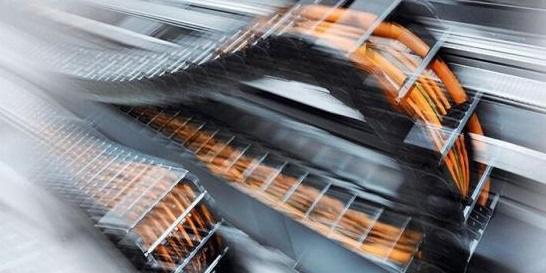Test items of tank chain cable and test standards introduction of robot cable
Tank chain cables, also known as robotic cables, are high-performance cables that act as cables for mobility, wear resistance, and bending resistance in the industry. The test project of robot cable can be divided into two major parts: electrical performance testing and physical performance testing.

Electrical performance test:
Conductor Resistance: Conductor resistance shall be measured for each conductor on a cable specimen of at least 1 M in length and the length of each cable specimen shall be determined.
2,Voltage test: If the finished cable is delivered, if there is no metal layer, it should be immersed in water. The length of the sample, water temperature and water immersion time shall be in accordance with the corresponding regulations. The voltage should be applied sequentially between all other conductors and metal layers (if any) or water to which each pair of conductors are connected, and then the voltage is applied between all of the connected conductors and the metal layer or water.
3,Insulated core voltage test: According to 2.3 of GB/T 5023.2-2008 standard.
4,Insulation resistance: According to 2.4 of GB/T 5023.2-2008 standard.
5,EMC test: Includes transfer impedance ZT test and shield attenuation as test. The test method for the electromagnetic compatibility test refers to IEC 62153-4-3, IEC 62153-4-4.
Physical performance test:
1,Mechanical properties testing of insulation and sheath: including mechanical properties after aging, low temperature elasticity and impact strength test, crack resistance test, thermal shock test, non-flame retard test, immersion mineral oil test, etc.
2,Mechanical life test:
1)Drag chain experiment: The test equipment includes a set of drag chain tracks, a drag chain drive device, a drag chain number record, a turn-on device, and a device that controls the switch. Both ends of the towline track are fixed on the device, wherein the fixed end does not move with the device, and the moving end reciprocates with the driving device at an average speed of 1 m/s at a distance greater than 1 m.
2)Bending test: The device includes a curved drive, a bending number record, a conduction device, and a device that controls the switch. The test method has bending rotation, 90 degree bending, rapid bending, and two-wheel winding test.
3)Torsion test: The device includes a curved drive, a bending number record, a conduction device, and a device that controls the switch. The test method has 3D twist, 2D twist, and vertical twist.
